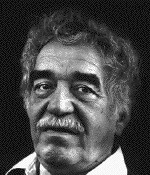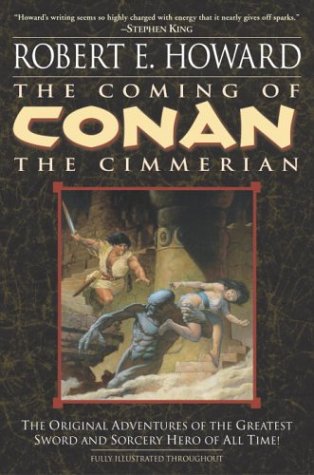Literary Criticism
Fantastically Bad Cinema
Essays
Under God's Right Arm
June 2006
July 2006
August 2006
September 2006
October 2006
November 2006
December 2006
January 2007
February 2007
March 2007
April 2007
May 2007
June 2007
July 2007
August 2007
September 2007
October 2007
November 2007
December 2007
January 2008
February 2008
March 2008
April 2008
May 2008
June 2008
July 2008
August 2008
September 2008
October 2008
November 2008
December 2008
January 2009
February 2009
March 2009
Alcoholic Poet
Baby Got Books
Beaman's World
BiblioAddict
Biblio Brat
Bill Crider's Pop Cultural Magazine
The Bleeding Tree
Blog Cabins: Movie Reviews
A Book Blogger's Diary
BookClover
Bookgasm
Bookgirl's Nightstand
Books I Done Read
Book Stack
The Book Trib
Cold Hard Football Facts
Creator of Circumstance
D-Movie Critic
The Dark Phantom Review
The Dark Sublime
Darque Reviews
Dave's Movie Reviews
Dane of War
David H. Schleicher
Devourer of Books
A Dribble of Ink
The Drunken Severed Head
Editorial Ass
Emerging Emma
Enter the Octopus
Fatally Yours
Flickhead
The Genre Files
The Gravel Pit
Gravetapping
Hello! Yoshi
HighTalk
Highway 62
The Horrors Of It All
In No Particular Order
It's A Blog Eat Blog World
Killer Kittens From Beyond the Grave
The Lair of the Evil DM
Loose Leafs From a Commonplace
Lost in the Frame
Little Black Duck
Madam Miaow Says
McSweeney's
Metaxucafe
Mike Snider on Poetry
The Millions
Moon in the Gutter
New Movie Cynics Reviews
Naked Without Books
A Newbie's Guide to Publishing
New & Improved Ed Gorman
9 to 5 Poet
No Smoking in the Skull Cave
Orpheus Sings the Guitar Electric
Polly Frost's Blog
Pop Sensation
Raincoaster
R.A. Salvatore
Reading is My Superpower
Richard Gibson
SciFi Chick
She Is Too Fond Of Books
The Short Review
Small Crimes
So Many Books
The Soulless Machine Review
Sunset Gun
That Shakesperherian Rag
Thorne's World
The Toasted Scrimitar
This Distracted Globe
Tomb It May Concern
2 Blowhards
Under God's Right Arm
A Variety of Words
The Vault of Horrr
Ward 6
When the Dead Walk the Earth
The World in the Satin Bag
Zoe's Fantasy
Zombo's Closet of Horror
Bookaholic Blogring
Power By Ringsurf
 Summary: Aurelio Escovar, an unlicensed dentist in a small Columbian village, arrives early to work one morning. He sits down at his table and methodically polishes a set of false teeth. His 11-year-old son tells him that the village mayor is in the lobby and wants to have an infected tooth pulled. Aurelio orders his son to tell the mayor he is not in, but the mayor has heard him. The mayor threatens to shoot Aurelio if he doesn’t see him. Making sure his own pistol is within reach, he acquiesces. Aurelio tells the mayor his tooth must be removed without anesthesia. Using hot forceps, Aurelio grips the tooth and mutters: “Now you’ll pay for our twenty dead men.” He removes the tooth and the mayor orders him to send the bill to the town.
Summary: Aurelio Escovar, an unlicensed dentist in a small Columbian village, arrives early to work one morning. He sits down at his table and methodically polishes a set of false teeth. His 11-year-old son tells him that the village mayor is in the lobby and wants to have an infected tooth pulled. Aurelio orders his son to tell the mayor he is not in, but the mayor has heard him. The mayor threatens to shoot Aurelio if he doesn’t see him. Making sure his own pistol is within reach, he acquiesces. Aurelio tells the mayor his tooth must be removed without anesthesia. Using hot forceps, Aurelio grips the tooth and mutters: “Now you’ll pay for our twenty dead men.” He removes the tooth and the mayor orders him to send the bill to the town.Analysis: Gabriel Garcia Marquez is best known for the novels “One Hundred Years of Solitude” and “Love in a Time of Cholera,” where he introduced the world to magical realism. Magical realism is a literary genre in which magic or fantastical creatures appear in an otherwise realistic setting.
I’ve never been a fan of magical realism, but there is no arguing that Marquez is a masterful writer. His ability to paint pictures and create rich characters with an economy of words makes him worthy of his 1982 Nobel Prize for Literature.
His short story “One of These Days” isn’t magical realism. In fact, its brutal realism – the short – very short, in fact – story of the consequences of political corruption that lead to a massacre.
The story opens on a warm and rainless Monday morning. Aurelio Escovar, a dentist with no formal education, arrives at work and begins his mediocre tasks for the day. His tranquility is interrupted by the arrival of the village mayor. A light exchange with his son follows with a threat of violence if Escovar doesn’t see the mayor, who wants a decayed tooth pulled. The readers experience this exchange:
“Papa.”
“What?”
He still hadn’t changed his expression.
“He says if you don’t take out his tooth, he’ll shoot you.”
Without hurry, with an extremely tranquil movement, he stopped pedaling the drill, pushed it away from the chair, and pulled the lower drawer of the table all the way out. There was a revolver. “O.K.,” he said. “Tell him to come and shoot me.”
Suddenly, the mood has shifted. What could have been a funny exchange between two old friends – village dentist and the old mayor – turns into something with teeth; something unpleasant.
The tension when the disheveled mayor makes his appearance is thick. Clearly, these are two men who despise each other. The mayor is here only because his face is swollen and he’s in agony.
The dentist inspects the tooth and declares that he must remove it without anesthesia because it is an abscess. The mayor senses that this is a lie, but he stoically gives his consent. Then out comes the tooth:
It was a lower wisdom tooth. The dentist spread his feet and grasped the tooth with the hot forceps. The mayor seized the arms of the chair, braced his feet with all his strength, and felt an icy void in his kidneys, but didn’t make a sound. The dentist moved only his wrist. Without rancor, rather with a bitter tenderness, he said:
“Now you’ll pay for our twenty dead men.”
The Mayor felt the crunch of bones in his jaw, and his eyes filled with tears. But he didn’t breathe until he felt the tooth come out.
The story ends with the dentist asking where to send the bill – to the town or the mayor. The mayor answers: “It’s the same damn thing.”
“One of These Days” is beautifully written and some of the images are as stark and real as photographs. Marquez’s command of language and his confidence in giving the reader just enough information to form the pictures, ideas, and characters – are top-notch.
The story, however, simply lacks an emotional and philosophical impact. Marquez is telling the readers that power corrupts. Is this news? Was it necessary to beat the reader over the head with that unsophisticated premise by having the mayor tell us that he and the town are the “same damn thing?”
Less would be more here.
Yet even despite this enormous flaw – the story does seem to work. And it’s because of the writing. One only wishes that Marquez’s premise was as sophisticated and as light as his words.
Read our literary criticism of Richard Matheson's "I Am Legend" hereLabels: Gabriel Garcia Marquez, literary criticism, literature
 StumbleUpon |
StumbleUpon |
 del.icio.us |
del.icio.us |
 Technorati |
Technorati |

This work is licensed under a Creative Commons Attribution-No Derivative Works 3.0 License.
The Template is generated via PsycHo and is Licensed.





The governor forces his subject, on pain of death, to act against his will, but the subject finds a manner of vengeance in performing the act. It becomes cyclical. A braver action would be to be shot by the mayor and refuse to help a corrupt society, or to shoot the mayor and overcome that corruption. Marquez is telling us in the final line that the town and the mayor are "the same damn thing" not because the money comes from the same place, but because the citizens are complicit in the corruption by not acting out against it.
The mayor is a cartoon villain, but the critique is on the everyday man who doesn't stand up to him.